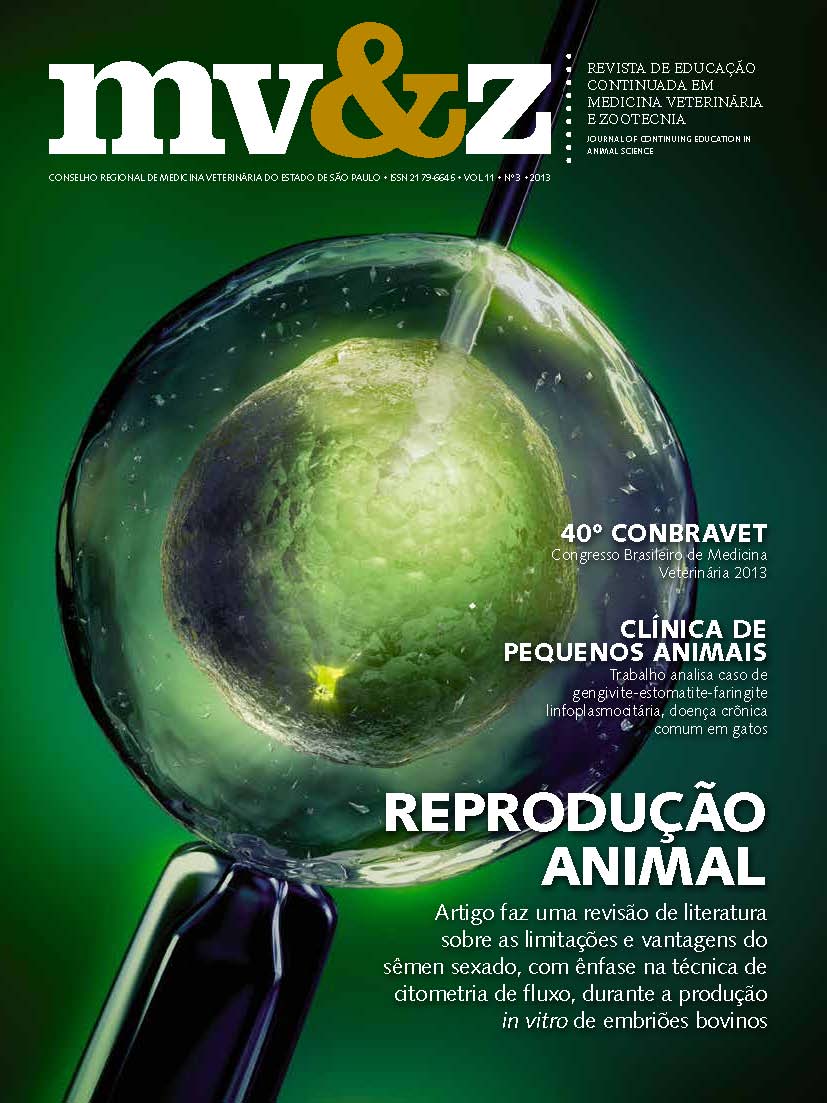Molecular techniques for rabies virus detection in organs of frugivorous bats
Main Article Content
Abstract
The aim of this study was to detect the rabies virus (RABV) presence in different organs of frugivorous bats using molecular techniques such as RT‐PCR, hnRT‐PCR, and the Real Time RT‐PCR. Thirty bats of the genus Artibeus were selected and resulted as positive by the DFA test and N2A‐cells inoculation test using brain tissue in both tests. Samples of salivary gland tissue, urinary bladder tissue, kidney tissue, lung tissue, stool, and skull lavage were collected for molecular assays. The organs and the stool were diluted at 1:10 (w/v) and the urinary bladder was diluted at 1:20 (w/v). The RT‐PCR and the hnRT‐PCR were performed using specific nucleoprotein gene‐target primers. The product obtained by reverse transcription technique was submitted to the Real Time RT‐PCR technique, using primers and probe specific for the RABV antigenic variant 3. For the 180 samples evaluated, the sensitivity results detected by the RT‐PCR, hnRT‐PCR and Real Time RT‐PCR techniques were: 56.25%, 82.57%, and 82.19%, respectively. The results obtained by RT‐PCR showed lower sensitivity of this technique compared with the hnRT‐PCR and Real Time RT‐PCR techniques, excepted for skull lavage samples. A comparison of hnRT‐PCR and Real Time RT‐PCR techniques performed by Fisher's exact test showed that the proportion of positives was non‐significant (P> 0.05) among skull lavage, organs and stool. Thus, the results suggest that hnRT‐PCR and Real Time RT‐PCR techniques can be used as complementary methods for the rabies diagnosis and are sensitive to be used in detecting RABV in different organs and extra neural tissues of bats.
Article Details
1. Autores mantém os direitos autorais e concedem à revista o direito de primeira publicação, com o trabalho licenciado sob a Creative Commons Atribuição-NãoComercial-SemDerivações 4.0 Internacional
2. Autores têm autorização para assumir contratos adicionais separadamente, para distribuição não-exclusica da versão do trabalho publicada nesta revista (ex.: publicar em repositório institucional ou como capítulo de livro), com reconhecimento de autoria e publicação inicial nesta revista.
3. Autores têm permissão e são estimulados a publicar e distribuir seu trabalho online (ex.: em repositórios instituicionais ou na sua página pessoal) a qualquer ponto antes ou durante o processo editorial, já que isso pode gerar alterações produtivas, bem como aumentar o impacto e a citação do trabalho publicado (Veja O Efeito do Acesso Livre);
